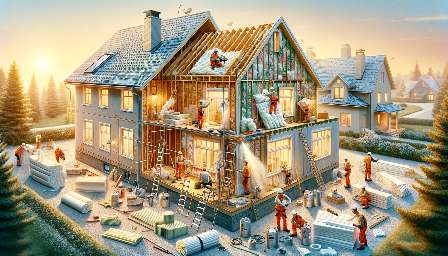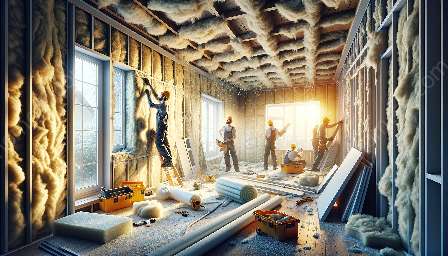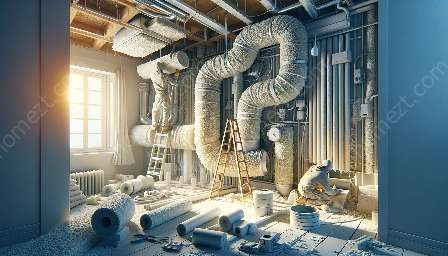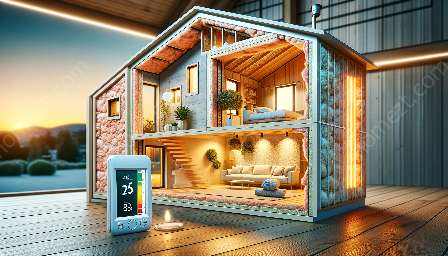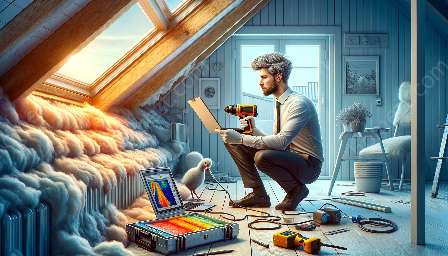When it comes to home improvement, insulation plays a crucial role in maintaining a comfortable and energy-efficient environment. However, working with insulation requires safety precautions to be followed to prevent potential hazards. In this comprehensive guide, we will explore the importance of insulation safety and provide valuable tips for ensuring a safe and effective insulation installation process. Let's dive into the world of insulation, safety, and home improvement.
The Importance of Insulation Safety
Insulation is a vital component of any home, helping to regulate indoor temperatures, improve energy efficiency, and enhance overall comfort. Whether you are renovating your current space or embarking on a new construction project, understanding the significance of insulation safety is paramount to safeguarding both your property and the well-being of those involved in the installation process. By adhering to proper safety measures, you can mitigate potential risks and ensure that your insulation project proceeds smoothly and securely.
Choosing the Right Insulation Materials
Prior to delving into the installation process, it's essential to carefully select the appropriate insulation materials for your specific needs. When considering insulation options, take into account factors such as R-value, material composition, and environmental impact to make an informed decision. By opting for high-quality insulation materials, you can boost the efficiency of your home and minimize the need for frequent replacements, ultimately contributing to a safer and more sustainable living environment.
Insulation Safety Precautions
1. Personal Protective Equipment (PPE)
Before commencing any insulation work, ensure that you and your team are equipped with the necessary personal protective equipment (PPE), including gloves, safety goggles, dust masks, and appropriate clothing. These items are essential for safeguarding against potential skin irritation, respiratory issues, and eye injuries that may arise during the insulation installation process.
2. Proper Ventilation
When working with insulation materials, proper ventilation is crucial to avoid inhaling airborne particles and fumes. Ensure that the work area is adequately ventilated, and consider utilizing mechanical ventilation systems as an extra precaution. This will help minimize exposure to potentially harmful substances and promote a safer working environment.
3. Handling Insulation Materials Safely
Handle insulation materials with care to prevent skin irritation and respiratory issues. Some insulation materials may contain fibers or particles that can be hazardous if inhaled or come into direct contact with the skin. Use caution when handling these materials and follow the manufacturer's guidelines for safe and proper use.
4. Fall Protection
If the insulation installation work involves elevated surfaces, such as attics or ceilings, it's crucial to implement fall protection measures. Utilize proper scaffolding, ladders, and safety harnesses to prevent falls and mitigate the risk of injuries. Prioritize the safety of yourself and your team members by adhering to strict fall protection protocols.
5. Electrical Safety
Insulation installation often involves working in proximity to electrical wiring and fixtures. Ensure that all electrical sources are properly identified and turned off before installation begins. In addition, exercise caution to avoid contact between insulation materials and live electrical components, as this can pose a serious safety hazard.
Post-Installation Safety Checks
Once the insulation has been successfully installed, it's essential to conduct thorough safety checks to ensure the integrity of the work and identify any potential hazards. Inspect the insulation materials for any signs of damage or improper installation, and address any issues promptly to maintain a safe and efficient home environment.
Conclusion
Insulation safety precautions are paramount for any home improvement project involving insulation installation. By prioritizing safety measures and following best practices, you can create a well-insulated, comfortable, and secure living space. Whether you are a homeowner or a professional contractor, integrating insulation safety into your home improvement endeavors is a vital step toward achieving long-lasting, energy-efficient, and safe living spaces.




